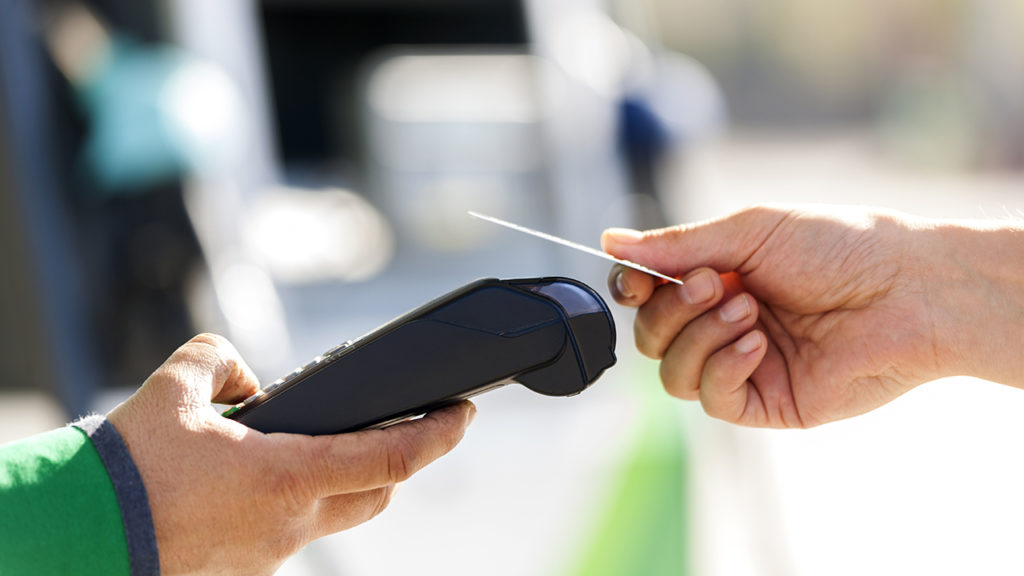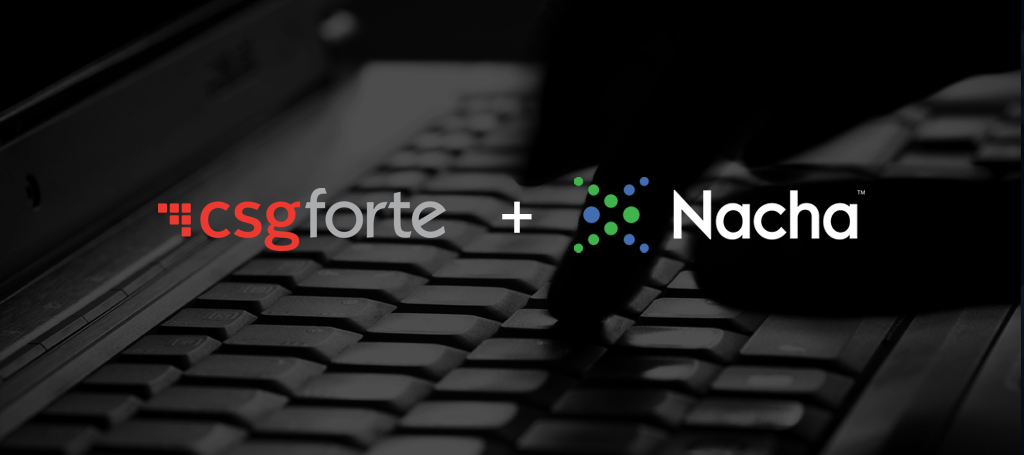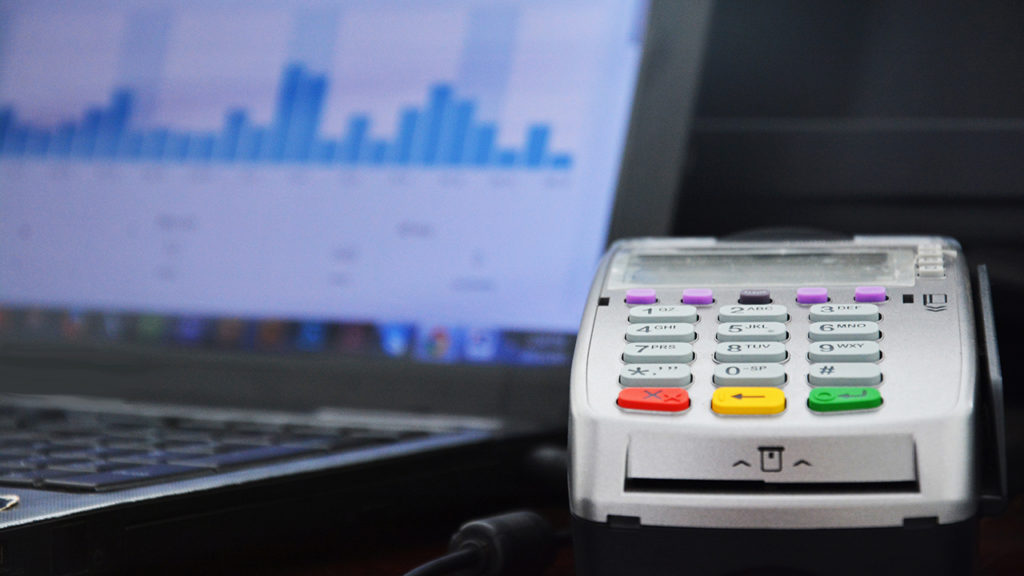What Are Electronic Payments and How Can They Help Your Business?
Imagine. You want to purchase a doughnut at the local bakery, but instead of handing over your credit card, you reach into your pocket and pull out a few grains you picked on your farm earlier that day. After all, the baker can use the grains to make more dough. Seems crazy, right? However, the barter system was a cornerstone of transactions in our early history. Lucky for us, advances in payment acceptance mean you no longer are tied to your farm (in fact, you don’t even need to have a farm nowadays). But the biggest advance in payment acceptance isn’t particularly tangible. Why? Electronic payments. The invention of electronic payments makes receiving and making payments online, via mobile and at the point of sale a whole lot simpler.
What Are Electronic Payment Systems?
Electronic payments are any payment completed through an electronic medium. These methods include credit and debit cards, ACH payments and virtual cards. These electronic methods replace physical checks or cash, and they can occur at the point of sale or online. For example, consumers can use their virtual rewards card to pay for their coffee at the drive-through.
The Benefits of E-Payments
With e-payments, users can enjoy:
- Payment ease: Many forms of e-payment allow users to pay with as little as a tap. With an easier payment process, you improve the user experience for payers and payees.
- Reduced processing costs: Processing checks involves printing, signing and mailing, requiring manual labor and material expenses. Electronic payments eliminate these processes, saving you money on payment processing.
- Greater visibility: With electronic payments, you can track transaction status, access financial metrics and follow audit trails for compliance needs. These tracking capabilities are often integrated into e-payment platforms, so following the status of your financials is much easier than when manually processing physical payments.
- Improved security: Handling cash or checks can easily lead to theft or fraud. With electronic payments, you eliminate passing physical money between hands, and you can enjoy built-in encryption that protects user data during transactions.
Types of Electronic Payments Systems and Their Advantages
There are various types of e-payments, and they all offer unique advantages.
ACH Debit Pull
The Automated Clearing House (ACH) processes electronic transactions between bank accounts. In the case of an ACH debit pull, a payee initiates a pull of funds from a payer’s account. One of the most common examples of a debit pull is direct deposit for employees.
These debit pulls are typically low-cost, and sometimes they’re completely free. The most significant advantage of this electronic payment is it eliminates the need to collect and process checks or deposit cash.
ACH Credit Push
An ACH credit push is the opposite of a debit pull. Rather than the payee pulling the funds from the payer’s account, the payer pushes the amount out of their account and to the payee. Credit pushes are common for a range of online payments where the vendor is an established company. ACH payments often come with lower processing fees than credit cards, making them a practical option for some businesses.
Credit Cards
With a credit card, a user borrows money from their card issuer up to a certain predetermined limit. The cardholder is then responsible for paying this borrowed money back and can be charged interest for outstanding balances.
In the case of e-payments, credit cards are fast and accessible. This secure payment method is easy to use at the point of sale. With the growing use of chip payments with credit cards, every transaction has a unique code that makes it challenging to steal sensitive information.
Mobile Pay
Mobile pay relies on a mobile device, such as a smartphone, smartwatch or tablet, to complete a transaction. Many of these devices are compatible with mobile wallets that allow users to upload their card information for use at point-of-sale terminals. These terminals must have near-field communication (NFC) to receive payment information from the mobile device and accept payment.
Mobile payments can also include mobile payment platforms that use ACH payments to complete transactions. This payment type offers convenience since most people carry some kind of mobile device. Additionally, these mobile payment methods typically require authentication before completing a transaction, making them a secure electronic payment option.
The History of Electronic Payment Systems
Electronic payments have their roots in the 1870s, when Western Union debuted the electronic fund transfer (EFT) in 1871. Since then, people have been enamored with the idea of sending money to pay for goods and services without necessarily having to be physically present at the point of sale. Technology has been a driving factor in the development of electronic payments. Today, making a purchase is as easy as tapping a button on your smartphone. Work with streamlining payment methods has been hard-won.
From the 1870s until the late 1960s, payments underwent a slow but gradual transformation. In the 1910s, the Federal Reserve of America began using the telegraph to transfer money. In the 1950s, Diner’s Club International established itself as the first independent credit card company, soon followed by American Express. In 1959, American Express introduced the world to the first plastic card for electronic payments.
Entering the 1970s, people became more reliant on computers as part of the buying process. In 1972, the Automated Clearing House was developed to batch process large volumes of transactions. NACHA established operating rules for ACH payments just two years later.
The (Wide, Wide) World Wide Web
Then along came the Internet. In the 1960s, ARPANET, a precursor to the modern Web, was built as a military network to improve communication. In the 1990s, online internet banking services were offered to bank customers. Those first online payment systems were anything but user-friendly—users had to have specific encryption knowledge and use data transfer protocols.
Soon, development across the Web, and the eventual invention of Web 2.0, set the stage for online sites to participate in what’s now known as e-commerce. In 1994, Amazon, one of the pioneers of eCommerce, was founded, along with a slew of other websites that we know and love to purchase on.
Payment acceptance and securing payments have been specific challenges for e-merchants and payment processors. In the early days of electronic payment processing, you needed special equipment and software to send a payment for goods. Now, payment acceptance can be integrated into websites, mobile platforms, and at the point of sale for scalability amongst merchants big and small.
Keeping Your Private Data Safe
As technology changes at an increasingly rapid pace, however, keeping your data safe has been at the forefront of most merchants’ minds. It’s easy to see why. Data breaches can have long-reaching financial and systematic impacts on businesses and can damage the reputation of long-standing organizations. What’s more, breaches can also spell financial ruin for companies without the financial, legal and logistical bandwidth to weather the storms of a hack.
Regulations by both NACHA and PCI standardize how payment data is received, stored, transmitted and processed for each transaction and help reduce the likelihood of an attack. However, it’s important that payment processors who offer PCI compliance programs stay ahead of those who wish to do harm to hardworking business owners by hacking their systems.
For point-of-sale transactions, EMV-enabled (also known as “chip card”) transactions add another level of encryption to your sales when performing card-present sales. End-to-end encryption, like what CSG Forte offers, provides a level of security to your entire payment processing system from terminal to payment acceptance and beyond. When accepting payments online, SSL webpages and other methods of data encryption help ease the worry of consumers and take some of the burden off merchants to remain PCI-compliant.
What’s Next For Electronic Payment Systems?
According to a McKinsey study from 2020, 78% of Americans currently use at least one form of digital payment. Offering consumers more ways to efficiently pay bills and purchase the things they want should be a key objective for all modern business owners.
Hot-button technologies like cryptocurrency and blockchain could be another way payment processing gets another technological push into a new era. After all, some cryptocurrency contenders aim to revolutionize the processing time for electronic payments, and if successful, can completely change the game for the payments industry. But in the interim, new trends like PIN on Glass acceptance to allow customers to use their PIN for mobile point-of-sale transactions, as well as contactless payments, same-day ACH and advancements in payment APIs all are geared towards making payment processing simpler, faster and more efficient.
For the last century and a half, the world of electronic payments has seen several notable technological shifts. As we speed through the industrial advances that the payment industry currently faces, we will only see a payment processing scheme that is safer, faster and operates how consumers and merchants need.
The Benefits of E-Payments for Your Business
Your business can benefit from e-payments with the help of:
- Improved supplier relationships: When your vendors can enjoy the ease of e-payments, they know that you value their time, security and ease of payment processing. These e-payments also include remittance data for ease of reconciliation. Many modern suppliers may come to expect e-payment options and may even turn down relationships without this convenience factor.
- Increased customer satisfaction: Your customers will enjoy the convenience and security of e-payments as much as your vendors. When paying for products or services is easy, consumers are more likely to follow through with a purchase.
- Reduced costs: Processing cash and checks can require hours of physical labor and expenses dedicated to stamps and mailing. Enjoy the reduced administrative overhead of e-payments.
- Enhanced security: With encryption and unique transaction codes, e-payments are far more secure than physical cash or checks. Plus, electronic payments eliminate the risk of losing cash or checks before they get deposited.
- Greater flexibility: If you offer various types of e-payments, consumers can pay in a way that works for them. For example, a buyer who forgot their wallet can use their mobile wallet to cover costs. This flexibility encourages more sales.
How Can CSG Forte Help Optimize Your Electronic Payment Systems
CSG Forte offers a comprehensive electronic payment solution that supports online, in-person and phone payments. Our payments platform supports secure, flexible payments with reliable reporting and a user-friendly interface. With recurring payment capabilities, intuitive bill presentation, point-of-sale support and trusted security practices, CSG Forte supports the success of modern businesses.
See what electronic payments can do for you, and get started with our platform today.




